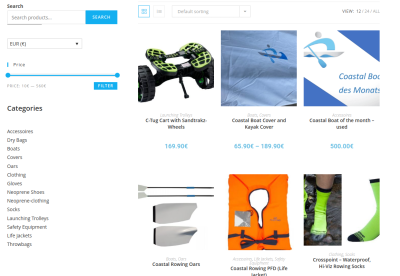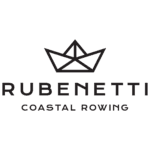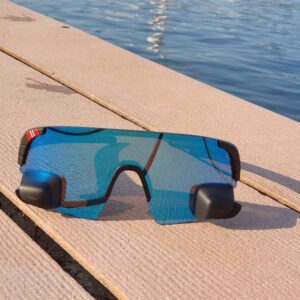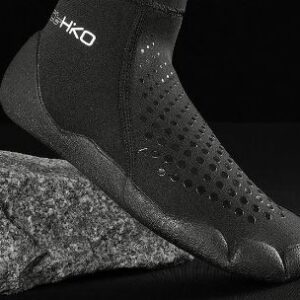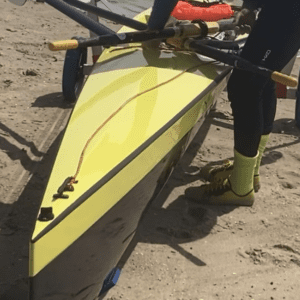Coastal rowing and neoprene socks. A contrast? Let’s get this out of the way. You should wear neoprene socks in fall and winter. At least on the North Sea and Baltic Sea it makes sense. The question … Do you need neoprene socks for winter? This is because these socks have a number of pleasant functions. Neoprene socks are available in different material thicknesses. The material thickness is generally between o.5 and 5 mm. The choice of material thickness should be based on the water temperature and weather conditions. Slim Socks can be worn on their own or in neoprene shoes such as our Stretcher Plate shoes.

Wearing neoprene socks for coastal rowing offers several advantages:
- Even in summer: protection from cold feet. Coastal rowing can take place in cold waters, especially in the early morning hours or in the colder seasons. Neoprene socks offer insulating properties and help protect feet from the cold by trapping heat. Especially on long tours or training sessions of 12-18km, your feet should stay warm. Feet and hands in particular are the first parts of the body to cool down and lose heat. Here too, it is important to keep your feet as warm and dry as possible. In summer o.5mm socks are sufficient
- Health: There is also a much greater chance of catching a cold. Diving socks offer a good solution to counteract these dangers. The heat-insulating properties of neoprene socks help sports enthusiasts to pursue their hobbies even in cold waters. In addition to their insulating properties, neoprene socks promote blood circulation in the feet.
- Beach Sprint starts: Furthermore, the elastic fit and the mostly seamless construction of the socks help to increase running comfort and grip in the sand. Unlike wetsuits, diving socks are quick and easy to put on and take off.
- Protection against injuries to the heel: When coastal rowing, there may be sharp objects such as shells, stones or other obstacles in the water that can lead to injuries. Neoprene socks provide some cushioning and can help prevent minor cuts, scrapes or abrasions.
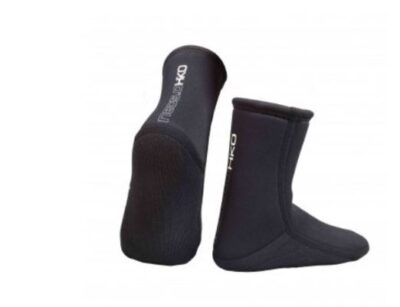
- Soft in the stretcher plate: Stretcher Plate socks or our contact shoes protect your heel in the stemming board. In active tool shoes but also on stemming board caps.
- Improved grip: Neoprene socks can also help to provide a better grip in the footboard shoes, especially if they are a little loose or have a velcro fastener. They can prevent the feet from sliding back and forth in the shoe, which improves stability and reduces the risk of injury.
- Hygienic protection: Wearing neoprene socks can also help protect your feet from dirt, bacteria and other potentially harmful substances in the water. This can help prevent infection and skin irritation.
In combination with neoprene shoes, pressure points can sometimes occur. You should therefore not use socks that are too small, also to prevent blisters.
Nevertheless, one recommendation: neoprene socks help to improve comfort, safety and performance by keeping feet warm, protecting against injury, improving grip and aiding hygiene.
Coastal rowing and neoprene socks in fall and winter
Coastal Rowing Neoprene Socks Winter Socks: These socks – in our case we’re talking about Hiko socks – can help you get through the winter. In winter, the North Sea water often gets quite cold. It gets really cold. Theoretically, the sea only freezes at around -1.7°C to -1.9°C in winter. Due to the salt content, the freezing point of the North Sea is lower than the known zero-degree value of water at atmospheric pressure.
The same applies to the Baltic Sea. Sea ice forms when the temperature of the water surface is below freezing point. The freezing point of calm Baltic Sea water is around -0.5°C due to its higher salt content compared to fresh water. In addition to temperature, wind speed and wind direction also play a decisive role in ice formation. In mild European winters, only the Gulf of Bothnia and the Gulf of Finland freeze over. In the southern Baltic Sea, ice only forms in very harsh winters. The entire Baltic Sea has only completely frozen over three times in the last hundred years. This was in the winters of 1939/40, 1941/1942 and 1946/4

